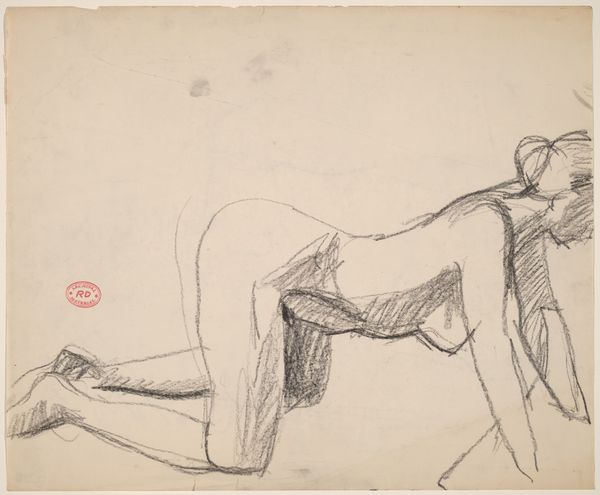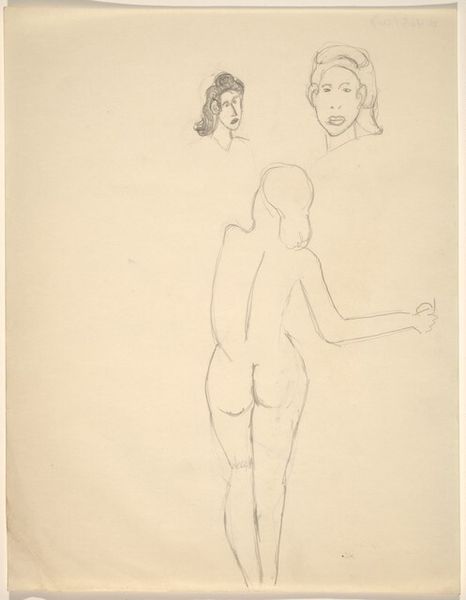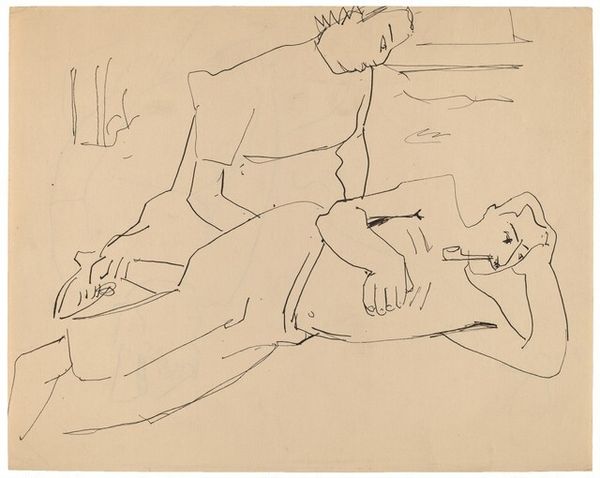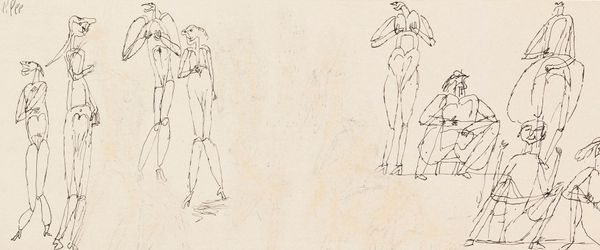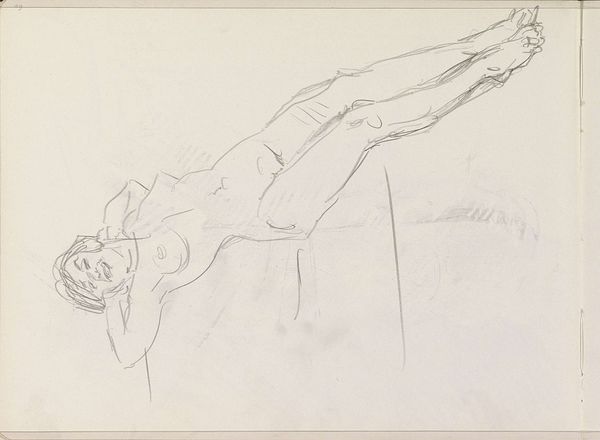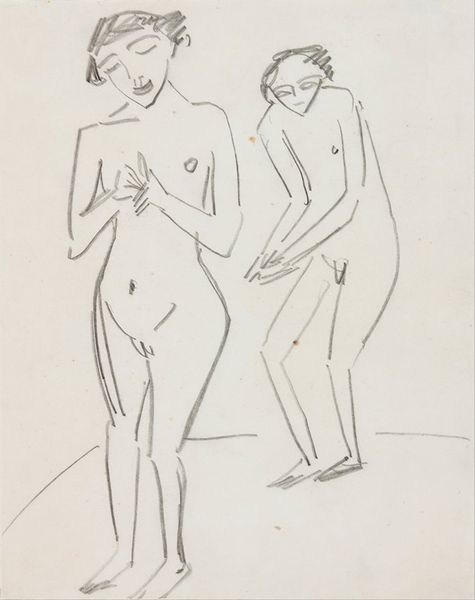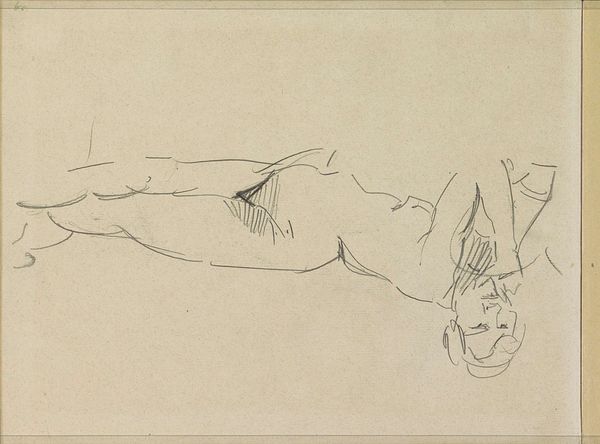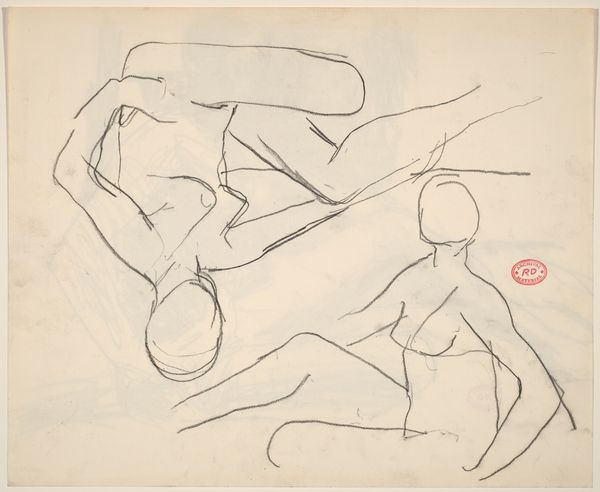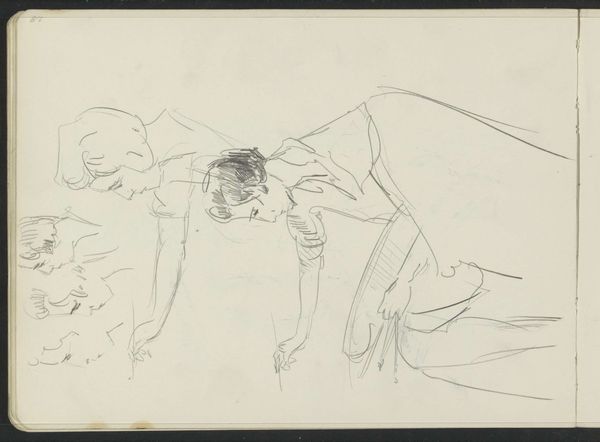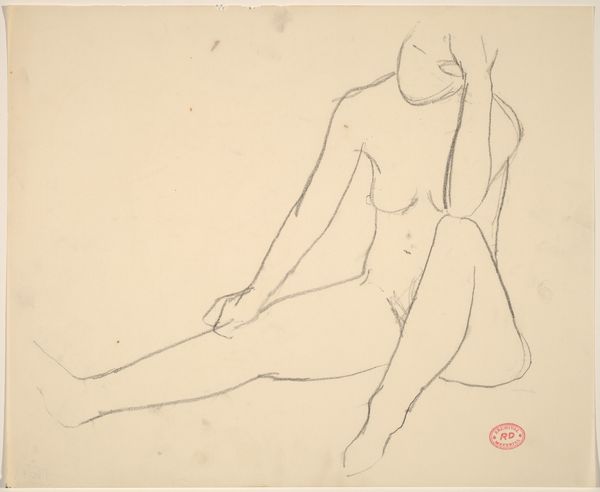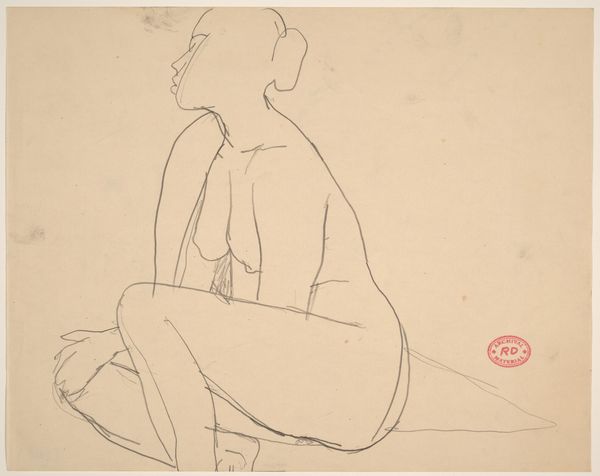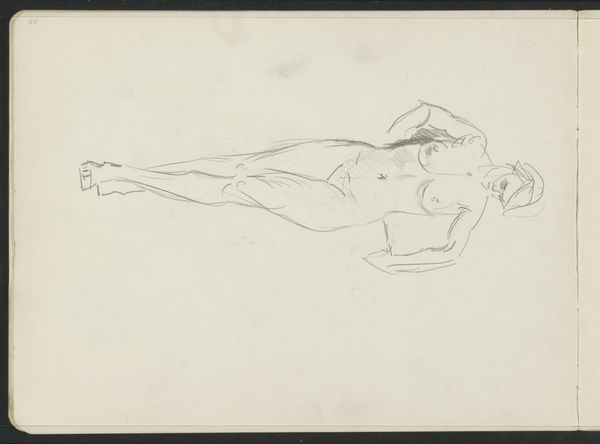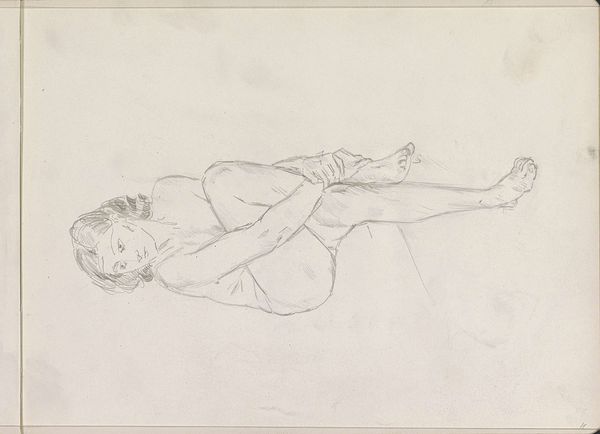![a) Nude Woman [recto]; b) Nude [verso] by M.C. Escher](/_next/image?url=https%3A%2F%2Fd2w8kbdekdi1gv.cloudfront.net%2FeyJidWNrZXQiOiAiYXJ0ZXJhLWltYWdlcy1idWNrZXQiLCAia2V5IjogImFydHdvcmtzLzNlNDgwODYwLTVhMDUtNDNlNy05OWZlLTFkMjQ3MjZiNThkZS8zZTQ4MDg2MC01YTA1LTQzZTctOTlmZS0xZDI0NzI2YjU4ZGVfZnVsbC5qcGciLCAiZWRpdHMiOiB7InJlc2l6ZSI6IHsid2lkdGgiOiAxOTIwLCAiaGVpZ2h0IjogMTkyMCwgImZpdCI6ICJpbnNpZGUifX19&w=1920&q=75)
drawing, pencil
#
drawing
#
imaginative character sketch
#
light pencil work
#
figuration
#
idea generation sketch
#
character sketch
#
ink drawing experimentation
#
dynamic sketch
#
pencil
#
sketchbook drawing
#
nude
#
fashion sketch
#
fantasy sketch
#
initial sketch
Dimensions: sheet: 49.9 × 65.1 cm (19 5/8 × 25 5/8 in.)
Copyright: National Gallery of Art: CC0 1.0
Curator: Here we have "a) Nude Woman [recto]; b) Nude [verso]", a pencil drawing from 1920 by M.C. Escher. Two sketches, one above the other, both figures in a seated pose. It feels sparse and unfinished, doesn't it? Editor: Absolutely, the minimal pencil lines almost feel tentative, like Escher is searching for something. Is it simply a study of the human form, or is there something more being explored here? I wonder what his intentions were, especially considering the societal norms around nudity in art during that era. Curator: The deliberate simplicity strikes me first. Notice the economy of line – the way he suggests volume and form with just a few strokes. It speaks to his understanding of essential structure, paring down the subject to its fundamental elements. It's more about pure form than any real-world representation. Editor: True, and the sketch-like quality encourages a certain intimacy. Escher shows the process, not just the polished result. But there's also a detachment in the facelessness of the figure. It's hard to ignore how women have historically been rendered anonymous or reduced to their physical attributes in art. Is he commenting on that, or perpetuating it? Curator: Facelessness here speaks to universality. These nudes transcend individual identity and enter into a realm of archetypal form, focusing solely on proportion, line, and spatial relationships. Escher, early in his career, was surely building towards his spatial explorations. Editor: But art is never truly created in a vacuum. It's difficult for me to simply separate this from its historical implications: male gaze, female objectification. Those narratives linger, whether intended or not, raising questions about the artist's awareness of the politics inherent in the act of depiction. Curator: But what about the undeniable elegance? The poise conveyed through just a few lines? There's a compositional harmony here that speaks volumes about Escher's innate understanding of balance and visual rhythm. Editor: Perhaps the value lies precisely in the conversation it sparks – a chance to dissect those artistic choices, examine them through different lenses. This unassuming sketch becomes a complex text, pregnant with possibilities. Curator: It proves that even in its most nascent form, an artwork can challenge our perceptions and prompt dialogue. It's interesting that something seemingly so slight can hold so much interpretive weight. Editor: Indeed. It is in those open spaces and minimal lines, that we locate possibilities. And so the discourse continues.
Comments
No comments
Be the first to comment and join the conversation on the ultimate creative platform.
